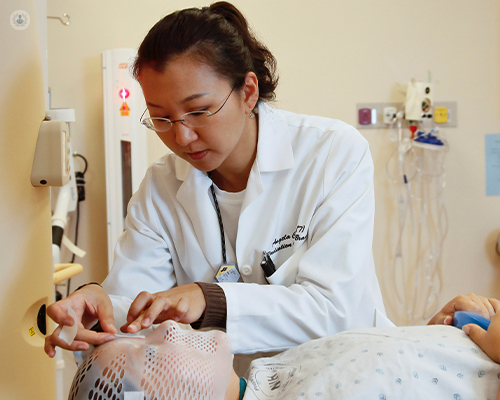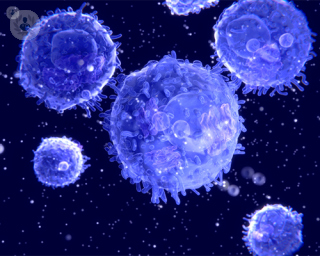Proton beam therapy
Dr Crispin Hiley - Clinical oncology
Created on: 05-04-2021
Updated on: 01-16-2024
Edited by: Conor Dunworth
What is proton beam therapy?
Proton beam therapy is a cancer treatment that uses protons to destroy cancer cells and stop the growth of tumours.

It is a type of external beam radiotherapy where a proton ray is aimed at a tumour from outside of the body.
Proton beam therapy is less likely than radiotherapy to cause damage to normal tissue surrounding the cancer. It is also different to internal and some external radiotherapy treatments, which use high-energy X-rays instead of protons.
How does proton beam therapy work?
Treatment is given via a radiotherapy machine. A proton ray is aimed at a tumour and passes through normal cells surrounding the cancer until it reaches it. Once the proton beam gets there, it stops and targets the cancer cells by releasing the energy from the protons.
Why is it done?
Proton beam therapy aims to eliminate or reduce the growth of cancers which may be difficult to treat with radiotherapy or surgery, especially those close to important parts of the body like the eyes or brain.
It can help reduce the long-term side effects radiotherapy may cause and can also be administered in higher doses. It doesn't affect the normal cells behind the cancer unlike radiotherapy and the protons are less likely to affect the normal cells they do pass through.
It's also possible to combine proton beam therapy with other treatments such as radiotherapy, surgery and chemotherapy.
Planning proton beam therapy
Proton beam therapy needs to be planned before treatment takes place. It means that the proton beam can be targeted precisely at the cancer.
Planning is done by a specialist proton beam therapy team. Before the process begins it will be considered whether patients need a mask or a mould to help them stay in the correct position during therapy.
The planning process involves:
• Imaging and planning which involves a CT scan (CAT) and the possibility of an MRI scan
• Small skin markings, which help with accuracy of the position required for proton beam therapy treatment
Who is on a proton beam therapy team?
Specialists in oncology, clinical oncology, radiology and nuclear medicine offer proton beam therapy. A doctor who specialises in specific cancers will also be part of the treatment team that patients have. This approach from multiple perspectives and areas of expertise maximises effectiveness of treatment and works to avoid negative side effects.
Who can receive proton beam therapy?
Both young people and adults can be treated. Proton beam therapy can be better for children, teenagers and young adults because there’s a lower chance of damage to their developing cells and may prevent long-term issues.
Adults may receive treatment due to:
• A difficult-to-treat-location of cancer in the body
• Serious risk of problems caused by side effects of radiotherapy
• Standard radiotherapy hasn't been effective and large dose of treatment needs to be made
• A cancer returning after receiving radiotherapy
Care throughout and after treatment
It’s important that patients boost their immune system throughout and after proton beam therapy treatment to assist in avoiding other medical conditions.
A doctor will advise patients about diet, no smoking, cutting out alcohol and being physically active.



